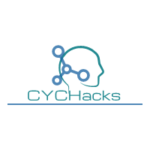Fed-up of the grueling manual process of verifying the credentials of healthcare providers?
Implementing a cloud-based credentialing system can prove a game-changer for you. Credentialing systems make your verification process smooth and quick, with authenticity. Moreover, you save on your investment for the manual infrastructure and streamline the recruitment process. There are many more benefits of implementing the credentialing system.
But before implementing the credentialing system, it is vital to get complete clarity on various related factors. Doing so will help you choose the appropriate credentialing verifying organization and effectively implement the system.
This article lists all the details you need about the credentialing system.
Table of Contents
What is a Cloud-Based Credentialing Software?
A CVO credentialing software manages the process of verifying healthcare providers as it keeps track of and maintains all licenses and certificates of healthcare providers. In addition, it aids in caring for patients and monitors professional requirements by storing various data about providers. The credentialing Software also helps you save time and money and minimize errors common in manual processes.
What Can Credentialing Software Do?
An efficient credentialing software stores data and perform services that make the credentialing process easier and more efficient. Besides, the Software can do the following:
- Store large volumes of healthcare provider information in a centralized, secure, and searchable form.
- Eliminate all paperwork from the process.
- Swiftly verify credentials and asses qualifications.
- Facilitate virtual meetings to asses providers’ credentials.
- Consistently track deadlines for various licenses, certificates, and other services.
- Automate numerous credentialing tasks.
- Help medical facility to remain in compliance with industry credentialing regulations.
- Shorten the time to get the provider credentialed and working.
How to Choose the Right Credentialing Software?
There are numerous credentialing Software in the market offering range of features. However, if you wish to implement effective credentialing Software, you must consider the following ten factors and choose the one that best suits your need.
1. Centralized Credentialing
It is a process in which two or more healthcare facilities reduce the cost by dividing the total cost of credentialing Software. The process increases goodwill between healthcare providers and administrators by enhancing credentialing efficiency and improving data integrity.
2. Cloud-based System
The cloud-based credentialing system allows you to use it on any digital device as it saves the data on the cloud. Hence, it provides excellent flexibility to all your organization’s employees and healthcare providers.
3. Workflow Automation
The credentialing process involves multiple tasks, including data collection, developing credential strategy, verifying given credentials and licenses, managing providers’ profiles, and getting in touch with payers. Using credentialing Software with intuitive dashboards and automated workflows for various tasks will significantly enhance productivity.
4. Document expiration Management
Manually updating providers’ data and credentials is overwhelming and challenging, with a high possibility of blunders. However, credentialing Software allows you to easily track providers’ profiles, documents, and certificates nearing expiration. You can also set reminders for expiration and send an automatic notification to the staff responsible for the task.
5. Continuing Medical Education Tracking
Healthcare professionals usually continue to do more courses to enhance their knowledge and provide improved patient care. Therefore, when looking for credentialing Software, choose the one that offers you a streamlined process to earn, track and view continuing medical education: CME certifications, CME credits, and points.
6. Electronic Forms and e-signatures
Waiting in line for a manual medical consent form or signature can prove costly in any medical emergency, especially in medical facilities where every second counts. Therefore, credentialing Software with a comprehensive system for electronic forms and e-signatures can significantly benefit your organization.
7. Peer Review Process Automation
Medical peer review plays a significant role in improving the quality and safety of patient care. Using reviews, organizations evaluate the performance of current and former employees’ performance to ascertain their work’s accuracy, relevance, and effect. So, if the credentialing Software can acquire and save feedback from peers, it will considerably help the peer review process run efficiently.
8. Secure Database Management
Data is vital for every organization, but managing data is not an easy task. Specifically, healthcare facilities struggle with handling providers’ data. However, credentialing Software with end-to-end functionality takes care of all data management, including data storage, segmentation, and security.
9. Customized Reporting
With credentialing Software, you no longer need to spend time creating different reports to figure out how each parameter impacts the workflow. It has comprehensive and customized credentialing that uses ad-hoc report writing to recover insightful reports in various forms.
10. CAQH Integration
The Council for Affordable Quality Healthcare (CAQH) is a non-profit association of health insurers. It collects and maintains a database of provider credentialing data. A credentialing software integrated with CAQH makes it easier to share provider data accurately and efficiently.
NCQA Certified Credentialing Process
In addition to the above ten factors, don’t forget to consider the National Committee for Quality Assurance (NCQA) certification. The NCQA focus on consumer protection and customer service improvement. It provides a framework for all healthcare organizations to implement best practices that help credential healthcare providers efficiently. Furthermore, it ensures that organizations maintain a high-quality network for members and contracted clients. To get the NCQA certification credentialing, the Software needs to fulfill the following requirements:
- Must have an internal QI process.
- Ensure appropriate agreements and collaboration with clients.
- Protect credentialing information.
- A peer review process.
- Credential verification.
- Monitoring of sanctions and complaints.
Conclusion
Healthcare organizations spend a significant amount of time and money on provider credentialing. Their reputation, quality of patient service, and revenue cycle depend considerably on the credentialing system. Any error in the credentialing process costs healthcare facilities valuable time and money and can even lead to loss of life. In addition, it can also lead to increased legal liability and coverage and referral issues.
Hence, investing in a customized credentialing software solution to streamline your organization’s credentialing process can save you time and money and boost process efficiency. However, before finalizing any credentialing software solution, consider all the above factors and match them to your organization’s requirements. Finally, choose the one that best suits your need.
Alex is fascinated with “understanding” people. It’s actually what drives everything he does. He believes in a thoughtful exploration of how you shape your thoughts, experience of the world.

